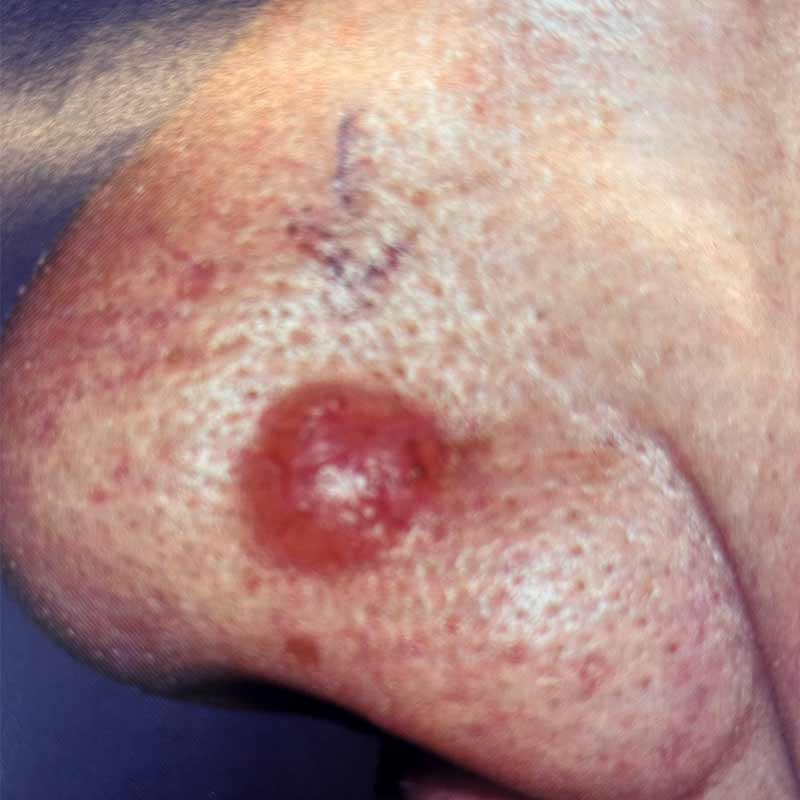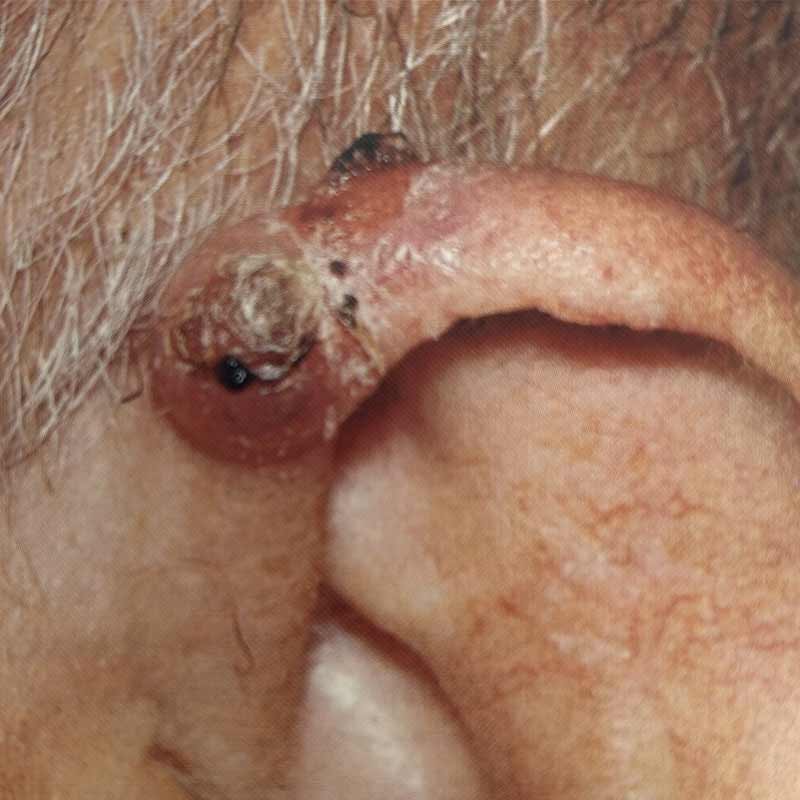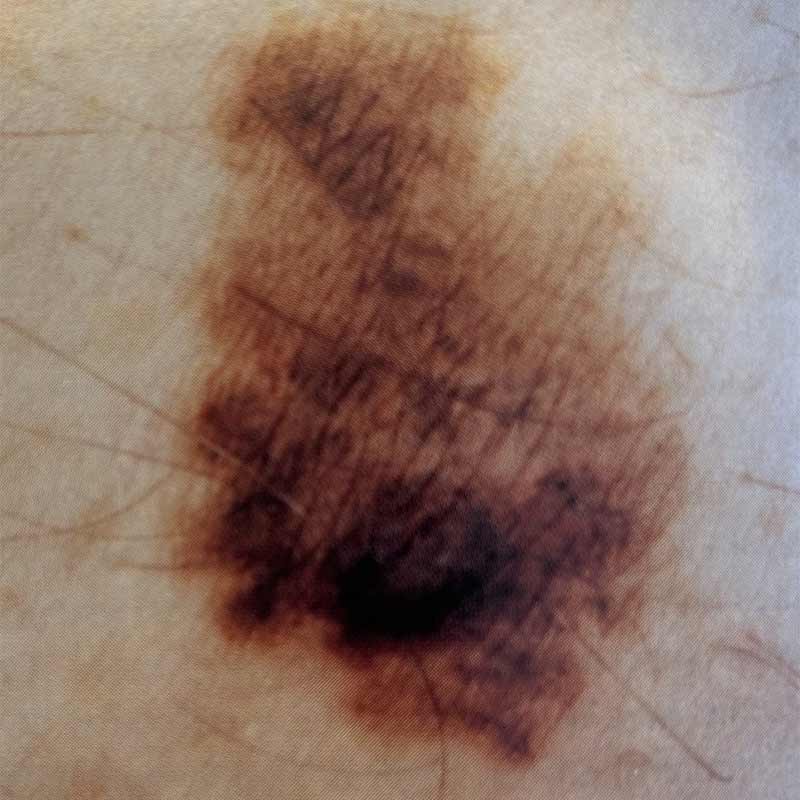Skin cancer
Skin cancer
Early detection of skin cancer not only significantly increases the chances of recovery, but also limits progression and complications. Some skin lesions may appear harmless but conceal precancerous or cancerous signs.
Consulting a dermatologist at the onset of a suspicious spot or skin change is essential to protect your health and intervene effectively at the right time.
Il existe plusieurs types de cancer de la peau dont la présentation et l’évolution sont très différentes généralement.
Basal cell carcinoma

The most common skin cancer is basal cell carcinoma (a small red lesion that does not heal and tends to bleed) but it is also the least aggressive as it generally remains localized and usually does not metastasize.
Squamous cell carcinoma

Red or brown in color, squamous cell carcinoma (epidermoid) tends to crust and feel rough. It is less common than basal cell carcinoma. However, it is more aggressive, as it can metastasize.
Mélanome

Melanoma is the most aggressive cancer, it can metastasize and may be fatal if not detected in time. It can develop from a mole or on healthy skin and is often characterized by black, brown, and more rarely red colors.
Common features of the three types of skin cancer
More common in areas more exposed to the sun, but sometimes in unexpected places like between the toes, palms and soles of the feet, mouth, between the buttocks, and scalpAll may involve bleeding
*Diagnosis always confirmed by a skin biopsy performed in-clinic with rapid results.
*May require surgical treatment in-clinic and/or referral to oncology.
*Your care is our priority.
Moles, melanoma, and skin cancer
Moles (or nevi) are common and usually harmless. However, some may evolve and hide precancerous or cancerous signs. Melanoma, a more aggressive form of skin cancer, can appear from an existing mole or develop directly as a new skin lesion.
To know when to be concerned, it is important to monitor your skin regularly. The ABCDE rule is a simple guide.
Asymetry
One half of the mole differs from the other.
Borders
Irregular or poorly defined.
Color
Multiple shades in the same lesion (brown, black, red, white, blue).
Diameter
Larger than 6 mm or increasing.
Evolution
Any rapid change (size, shape, color) or onset of bleeding/itching.
You should consult a dermatologist if a mole changes appearance, if a sore does not heal, or if you have a family history of melanoma. A skin examination at our clinic can distinguish benign lesions from suspicious ones and allow for rapid intervention. Early detection remains key to protecting your health and increasing recovery chances.


Treatment of skin pre-cancer
If our dermatologist identifies a suspicious lesion, prompt treatment can often prevent it from progressing to skin cancer. Among the available options, photodynamic therapy is an innovative, non-invasive approach we favor at the clinic.
This treatment involves applying a photosensitizing agent to the skin, which is then activated by specific light. This process selectively targets and destroys abnormal cells while preserving surrounding healthy tissue.
Advantages of photodynamic therapy for treating skin pre-cancers
- Non-surgical and minimally invasive treatment.
- Safe, with minimal side effects.
- Effectively treats multiple precancerous lesions in a single session.
- Improves skin appearance (texture and uniformity).
Photodynamic therapy is a modern, effective alternative for treating precancerous lesions and preventing their progression. A personalized dermatological follow-up at our clinic will determine if this approach is suitable for your condition.
Prevent skin cancer development
Your skin is your first barrier against the outside world and deserves your full attention. A changing mole, a persistent lesion, or an unusual spot should never be ignored. Early detection of skin cancer and melanoma makes all the difference: the sooner the evaluation, the better the chances of recovery.
With our medical expertise and modern solutions, it is possible to effectively treat precancerous lesions and preserve your skin’s health and appearance.

